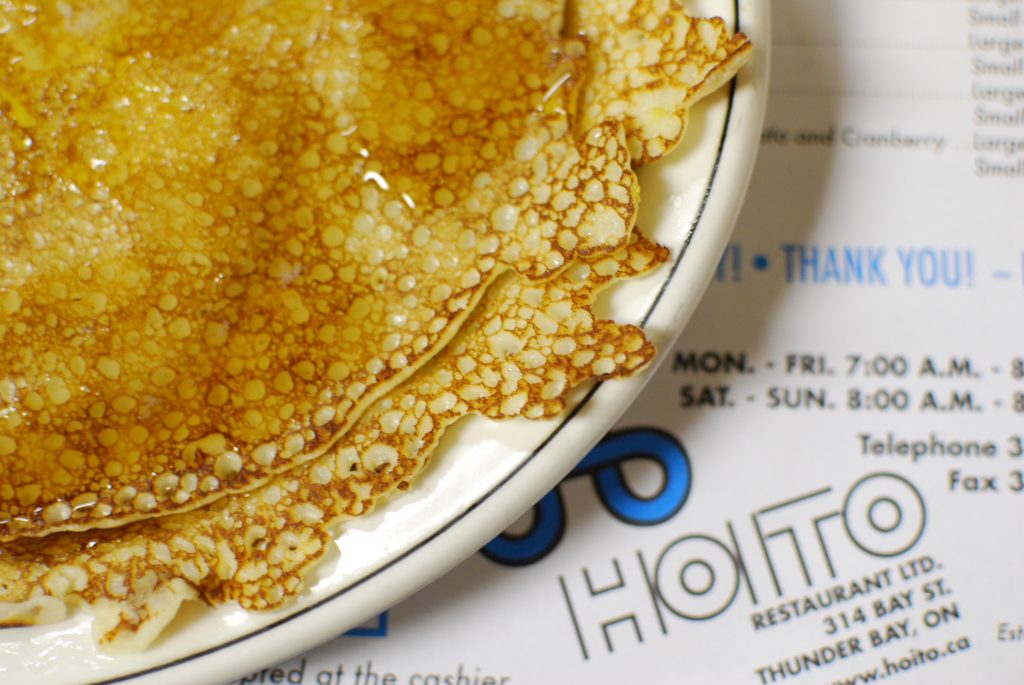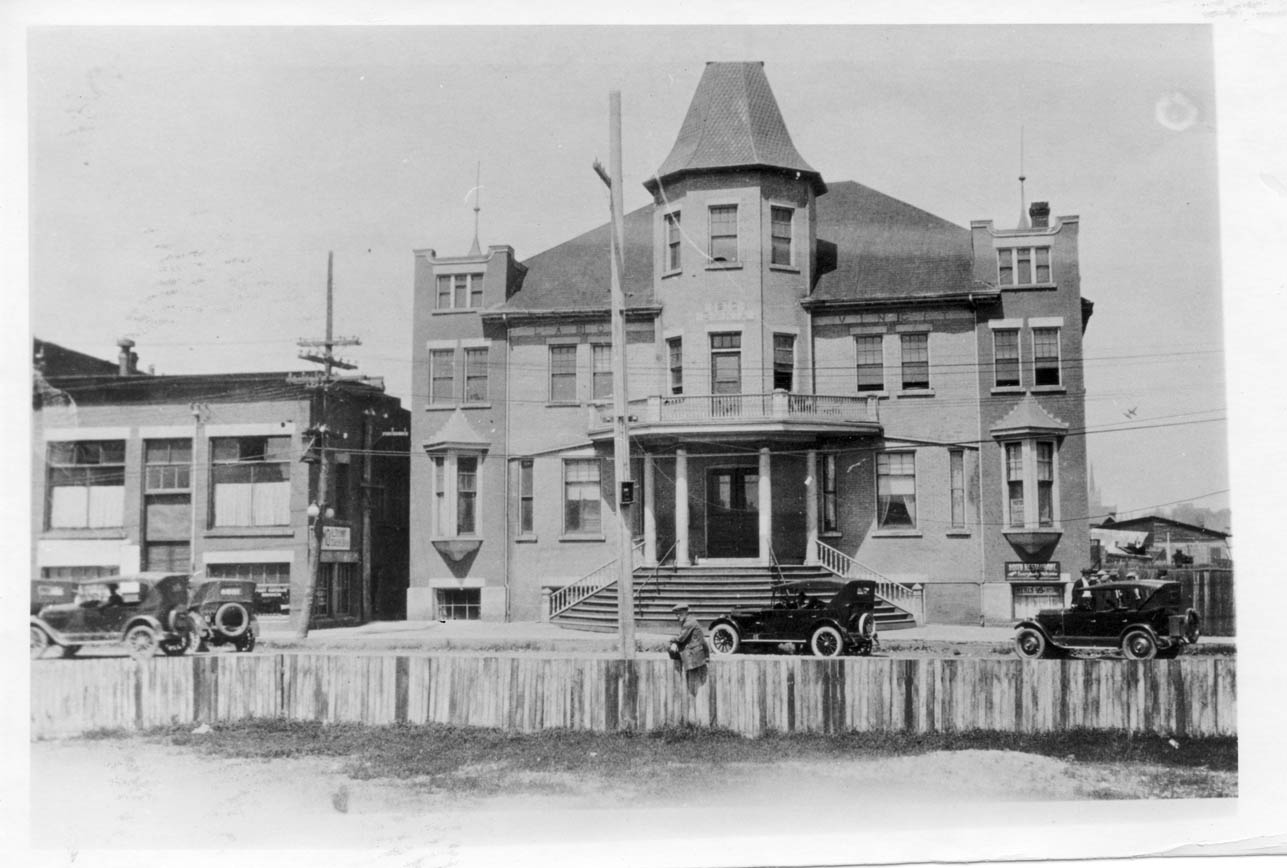By Bonnie Schiedel
The Hoito is said to be the oldest cooperatively owned and operated restaurant in Canada and on May 1, it celebrated its 100th birthday. To mark that milestone, here’s a look back at the Hoito’s history (although we still have some unanswered questions, like when did the scale at the entrance show up?)
1918
Finnish bush workers who wanted a home base for inexpensive, hearty meals on their days off and during seasonal layoffs decided to open a co-op restaurant in the basement of the new Finnish Labour Temple at 314 Bay Street. The founding meeting was held on March 27, 1918. Fifty-nine people contributed $5 each in “comrade loans,” and the Hoito (which means “care” in Finnish) opened on May 1. It featured a cafeteria-style layout with long tables and an all-you-can eat buffet for 25¢. If you bought a weekly ticket, 21 meals cost $4 total.

A Northwestern Ontario logging camp, 1918
1920s and 1930s
The Hoito, along with the upstairs neighbour the Temple, quickly became a centre for Finnish social, cultural and political life. The restaurant was a place to get the scoop about forestry jobs and contacts. Its first manager was A.T. (Tom) Hill, a former recruiter for the labour union organization Industrial Workers of the World (IWW or Wobblies). The RCMP kept an eye on the entire building and sometimes conducted raids as it was considered a hotbed for socialism and potential revolution.
1940s–1980s
While politics and bush work changed, the restaurant continued going strong. Most restaurant goers purchased meal tickets or paid a flat all-you-can eat rate. Menus boasted that it was “Owned and Operated by the Boarders Themselves” and that there was “Plenty to Eat,” “Everything the Best,” and “Clean and Wholesome.” They also reminded patrons to “Please leave used Serviettes on the table.” In the 1960s, the cost of dinner eaten at the communal tables was $1. Undated menus from the era show a range of items for those sitting at individual tables, both Finnish (mojakka and beverage for $1.30 and clabbered milk or viili for 45¢) and North American (t-bone steak including beverage, bread, soup, and dessert for $5, and pancakes and coffee for $1.10).
1990s–2000s
The word was out: visitors to Thunder Bay were urged to visit the Hoito for its old-school dining and vibe, and it was featured in the Toronto Star and The Globe and Mail, and on the Food Network show You Gotta Eat Here! The fare remained generous and cheap: a 1991 dinner special for $6.50 offered cream of chicken soup, rye bread, coleslaw, peas, mashed potatoes, ham steak, pumpkin pie with whipped cream, and unlimited coffee. Celebrity diners included Gordie Howe, Rick Mercer (who learned to make Finnish pancakes in a segment for his show The Rick Mercer Report), and Jordan Staal, who brought the Stanley Cup.

Flipping world-famous Finn pancakes
2010s–today
In 2011, the Finnish Labour Temple was recognized as a National Historic Site. In 2015, the Finlandia Association warned that the building faced financial struggles and expensive maintenance costs, leading to some community support and fundraising. Today, to mark “Hoito 100,” the Hoito is planning events like 10 Decades of the Hoito in June with dishes from each decade, and a culinary festival in October. Happy 100th to the Hoito!

Photo by Chris Merkley

















